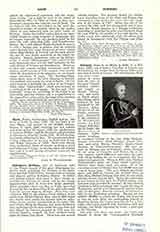

Sobaipura Indians , once an important tribe of the Piman branch of the great Shoshonean linguistic stock, occupying the territory of the Santa Cruz and San Pedro Rivers, in southeastern Arizona and adjacent portion of Sonora, Mexico. In dialect and general custom they seem to have closely resembled the Pàpago, by whom and by the closely cognate Pima most of them were finally absorbed. Their principal center was Bac or Vaaki, later San Xavier del Bac, on Santa Cruz River, nine miles south from the present Tucson, Arizona. Here they were visited in 1692 by the pioneer Jesuit explorer of the southwest, Father Eusebio Kino, who in 1699 began the church from which the mission took its name. Other Jesuit mission foundations in the same tribe were (Santa Maria de) Suamca, just inside the Sonora line, established also by Kino about the same time, and San Miguel de Guevavi, founded in 1732 near the present Nogales, Arizona, all three missions being upon the Santa Cruz River. There were also several visiting stations. The missions shared the misfortunes attending those of the Pima and Pàpago, but continued to exist until a few years after the expulsion of the Jesuits in 1767. Before the end of the century the tribe itself had disappeared, and in later years San Xavier appears as a Pàpago settlement. According to tradition the tribe was destroyed about the year 1790 by the attacks of the wild Apache, by whom a part were carried off, while the others were forced to incorporate with the Pàpago and Pima (q.v.).
JAMES MOONEY

